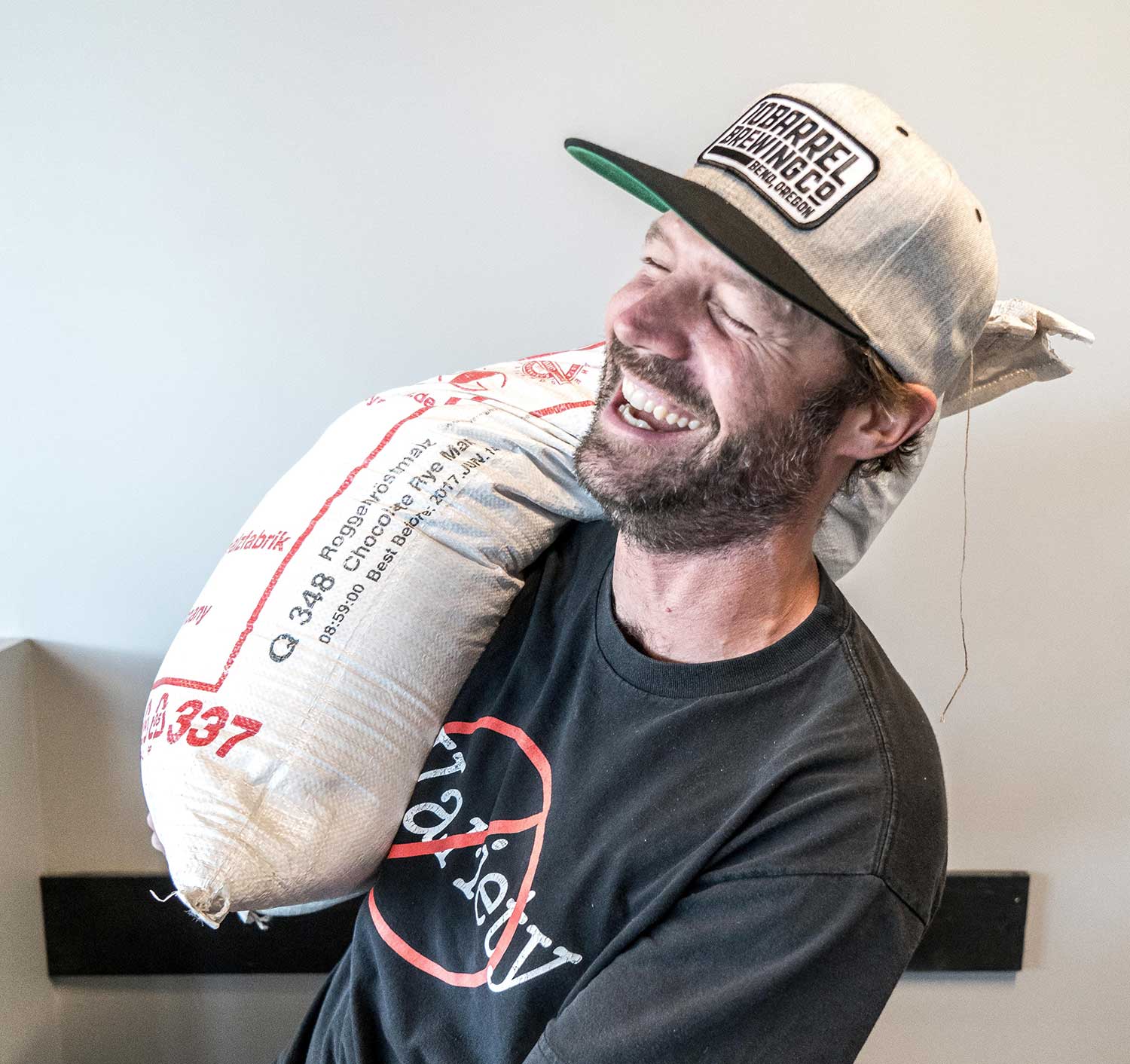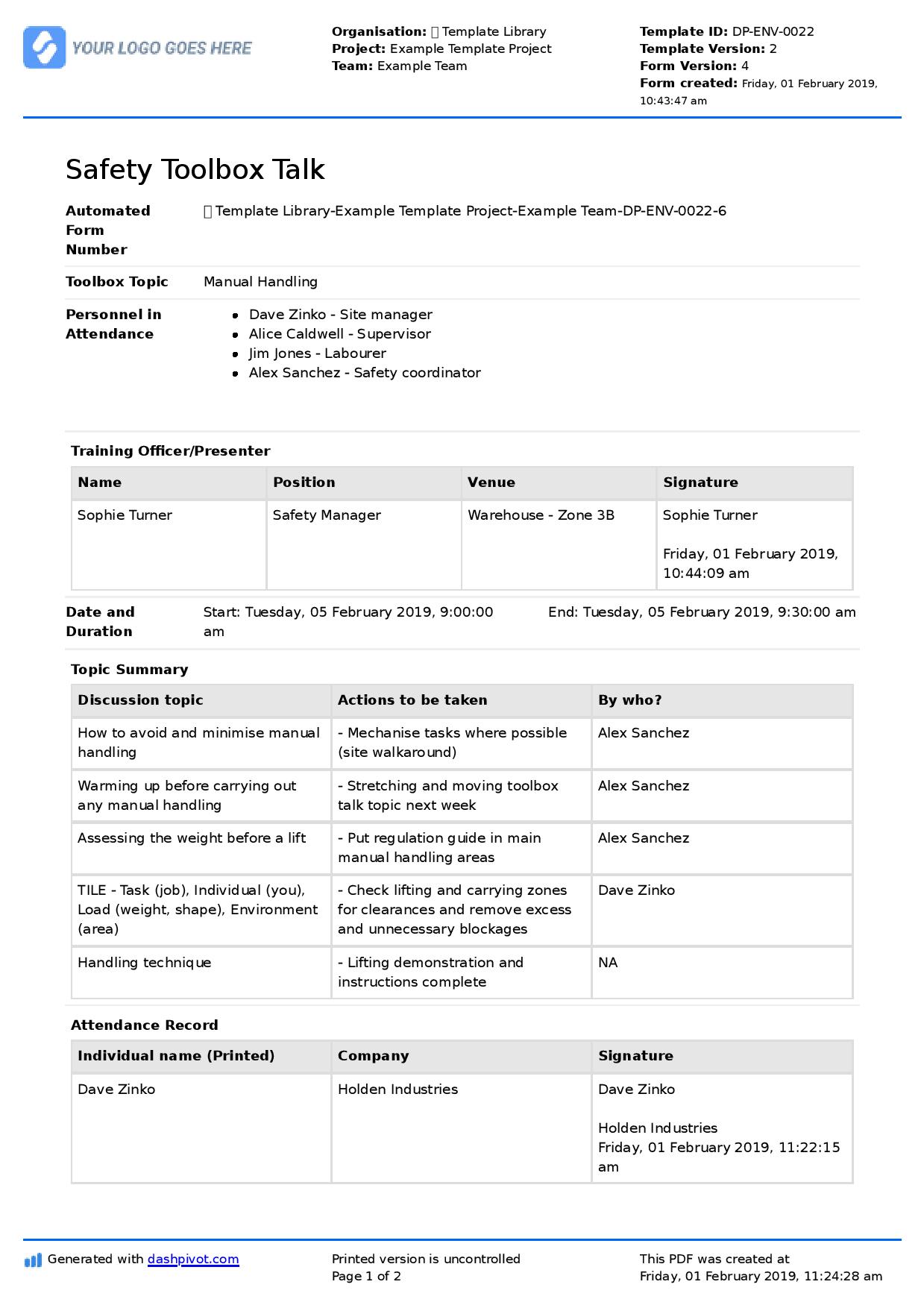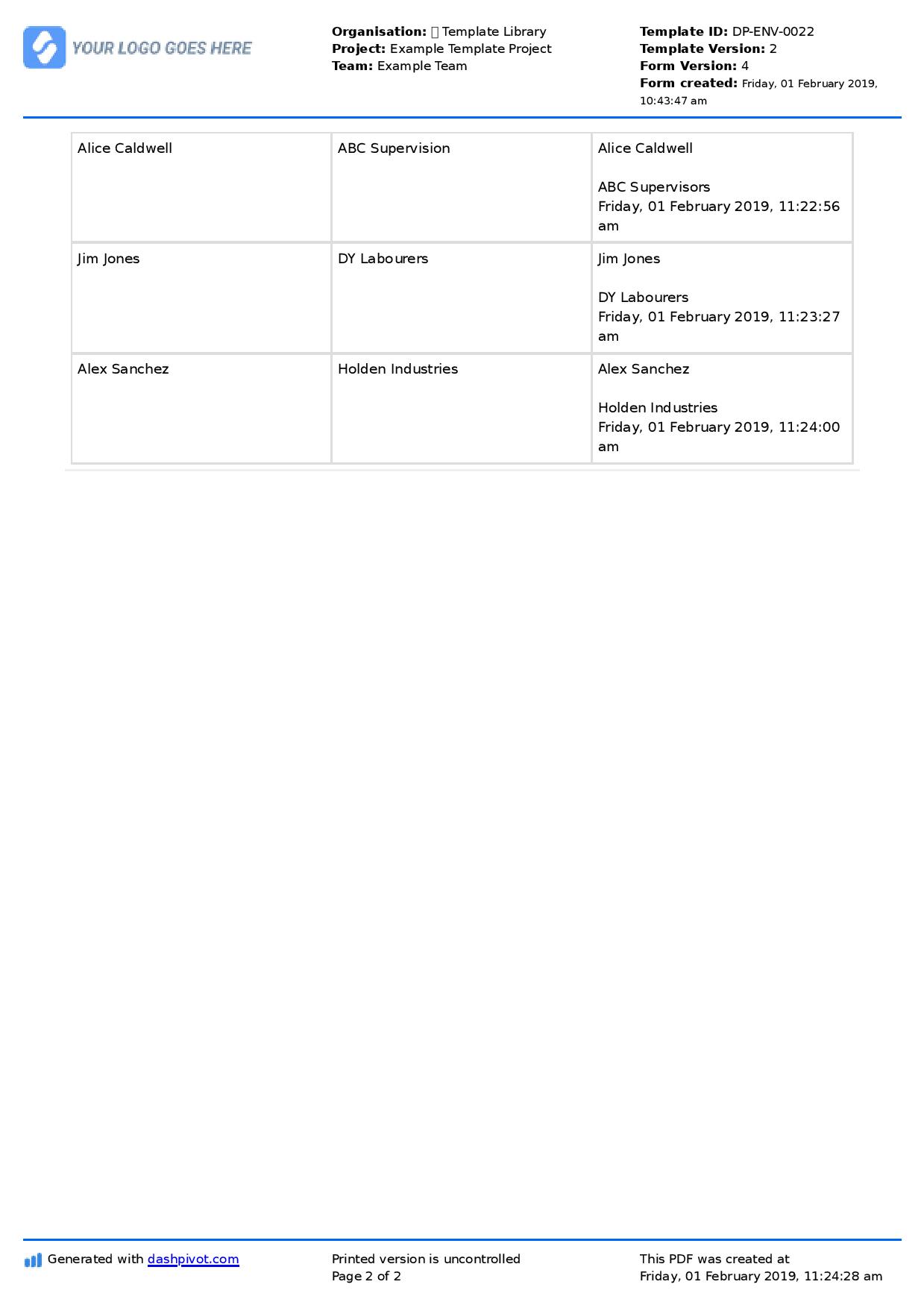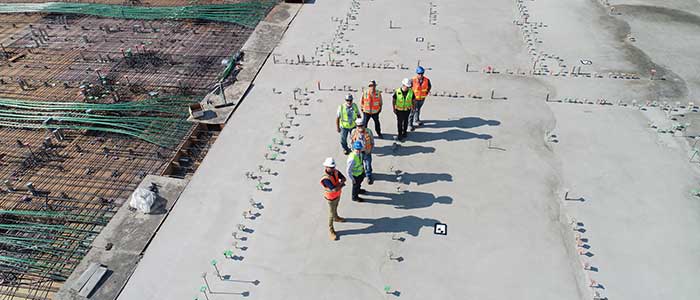Safety – Toolbox talk on manual handling

Toolbox talk on manual handling
Do you need to do a toolbox talk on manual handling?
The short answer is yes, it's extremely important that you do a toolbox talk on manual handling.
Manual handling - defined as any task or activity requiring the use of force exerted by a person to move, hold or restrain an object - is one of those subjects which we all understand, and yet aren't very 'good' at.
Manual handling is second nature to us, which is part of the problem. As people, we have become desensitised to the act of lifting and moving objects, and it happens so frequently that we develop bad habits which result in short term and long term injuries.
Manual handling is frequently one of the major causes of injuries and long term work-related disabilities on workplaces all over the world.
This isn't at all surprising given the frequency and types of manual handling tasks which are happening in workplaces all the time.
One of the reasons in which a toolbox talk on manual handling is so important is that the dangers of manual handling are often incremental - but crippling. It's easy for construction, warehouse and other workers to continue with manual handling bad habits, and in the short term they may be fine. But in the long term, over the span of a 10, 20, or 40 year career, bad habits add up and can severely impact quality of life.
Companies and workers have a massive incentive to focus on manual handling safety. It keeps people working in a fit and safe manner for longer - which is beneficial for all.
Conducting one or multiple toolbox talks on manual handling is one of the easiest and most effective ways of ensuring that your workers are engaging in safe manual handling practices, every day.
The frequency and informal nature of toolbox talks means that it's possible to keep manual handling safety top of mind almost year round, and to constantly improve how people think about and conduct manual handling activities.
Toolbox talk on manual handling example and usable document
So what should a toolbox talk on manual handling look like?
That depends. The nature of your work and the types of manual handling your workers engage in should inform your toolbox talk more than anything else - although there are some principles of manual handling which should be covered during every toolbox talk on the subject - or during the 'first' manual handling toolbox talk.
Each toolbox talk should only last a few minutes, so how much you can cover depends on the detail required for each subtopic and how much everyone has to say about the subject.
The toolbox talk on manual handling below covered a fair bit of ground. You can see that the training officer or toolbox talk presenter was able to cover and discuss a number of key manual handling topics including:
- How to avoid and minimise manual handling
- Warming up before carrying out manual handling
- Assessing the weight before a lift
- TILE - task, individual, load and environment which is an acronym for manual handling best practices
- Handling technique
Simply discussing these topics is a important, but you'll also not that the safety manager here created a number of action items or actions to be taken in order to improve that area of manual handling safety.
This is an important part of a toolbox talk on manual handling as well as any toolbox talk.
Especially with manual handling, you'll want to create some action items for the topics discussed. If an attendee surfaces an issue with an activity which can and should be mechanised, or where they could have used a second hand, or where an area is too busy and crowded to perform safe lifts, then you should be able to create an action item and allocate that item to a person on the spot.
This type of approach to toolbox talks ensures that you are constantly improving worker safety, and that people feel encouraged to discuss the topics and make suggestions - knowing that something will get done.

Use this framework for your own toolbox talks on manual handling and other topics.
How else can we improve manual handling safety?
Toolbox talks on manual handling are an effective way of improving manual handling practices and worker and company safety - but what other things can you do to impact manual handling injuries?
You can take the same approach which you would take to almost any workplace safety issues - to identify the risks, constantly assess the risks and then control and mitigate the risks.
In addition to talking about and informing people about manual handling safety, monitoring and controlling for these activities is paramount.
Identifying manual handling risks
As was previously mentioned, one of the major risks associated with manual handling is that it can be easily overlooked or ignored as a hazard. Because it's a constant hazard, and because it's not big and brash like a fire or explosion, it's important to pay extra attention to identifying manual handling risks.
These risks can be small like trip hazards, or big operations issues like the size and weight of supplies and pallets and the equipment used to move them - but identifying manual handling risks through site safety walk-throughs and hazard identification, as well as constant feedback from employees is the best first step to making positive changes.
You can also do simple things like look back through your safety and incident records to see how many manual handling incidents have occurred, and where/why they happened.
Assessing the risks
The next step to improving manual handling safety involves being able to ingest and understand what has been identified. All of the hazard and incident information you compile is ideally managed in an information management system like this, where you can store and easily find any safety record.
Once the hazards are identified, you can then start to begin assessing the risks of manual handling. You can use specific manual handling risk assessments, or engage in more manual efforts of discussing each hazard with a specific person.
However you approach it, you want the stage of assessing the risks to provide you with two outcomes:
- To prioritise the hazards which exists
- To understand how those hazards can be mitigated
Controlling the risks
And the final piece of the manual handling improvement puzzle is to implement the changes which resulted from identifying and assessing the hazards.
Some of these ideas may have come from workers during toolbox talks on manual handling, while others may have been found from safety coordinators and managers.
Controlling the risks for manual handling can involve things like:
- Modifying the nature of the objects being carried
- Modifying the workplace layout
- Modifying the task itself and others
It's amazing how many short and long term manual handling injuries and incidents could have been and can be reduced or eliminated by simply changing a few process and moving a few things around - as well as ensuring people have the knowledge and tools they need to perform manual lifts and movements effectively (through toolbox talks on manual handling and other discussions).
You want to make these type of safety cycles an integral part of your every day operations, which is helped by performing toolbox talks and creating a culture of safety whereby people help you identify, assess and control for the risks.
Manage safety in this way, and workers are more likely to feel safe and return home safely every day.
People in 80+ countries use this safety management system to digitise and streamline their safety processes.



